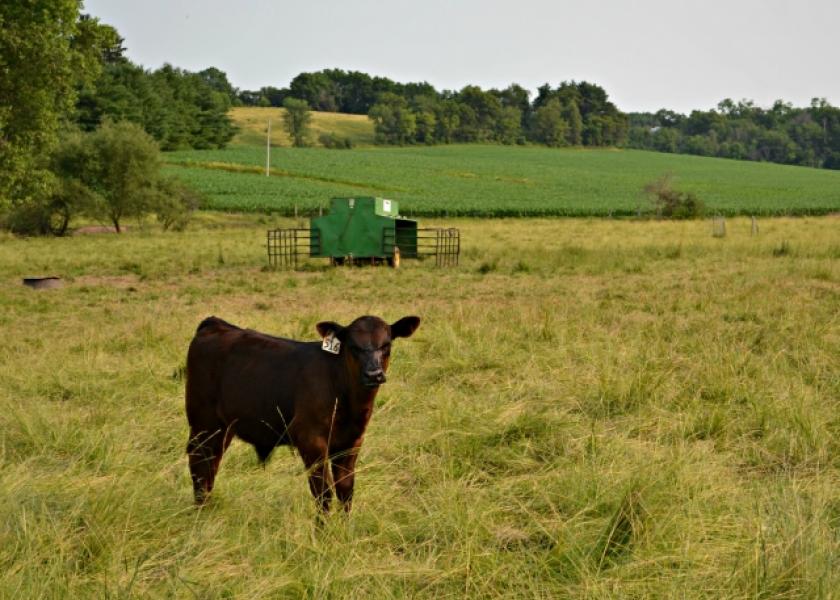Got Freshly Weaned Calves? Tips for Starting Them on Feed

When it comes to starting freshly weaned calves on feed, cattle producers have likely heard the saying, “Calves never get over a bad start.”
But Ted Perry, a cattle nutritionist with Purina Animal Nutrition, shares the opposite view with producers: “Calves never get over a good start.”
“If calves get a good start on feed in the first 10 to 14 days after being weaned,” Perry explains, “it’s amazing how often health issues can be minimized and the calves’ performance can take off.”
Perry acknowledges that weaning time is stressful for calves. He points out that calves typically are on pasture with their dam where “life is good,” when they are suddenly faced with a plethora of stressors and challenges. They are weaned, shipped, commingled, processed, faced with a diet change, and - to top it off - the weather could shift to one extreme or another.
Additionally, freshly weaned calves are often hungry, meaning they tend to bawl for their dam. Bawling for extended periods can irritate a calf’s throat and potentially lead to respiratory disease.
“All of that stress can lead to reduced disease resistance for the calf,” Perry says. “But, if you are able to get weaned calves eating quickly, then you may be able to address and potentially overcome stress and sickness.”
Perry adds, “The key to keeping freshly weaned calves healthy is getting them eating.”
Here are some tips to get your freshly weaned calves eating quickly:
1. Use lick tubs
Perry suggests placing lick tubs as a free-choice supplement in calf receiving pens. He notes that supplement tubs are often popular in cow herds and calves tend to be familiar with them.
The lick tubs offer two benefits for calves. First, the licking action produces saliva that can help ease any throat irritation from bawling. Second, licking the tub stimulates calves’ appetites; and they may then look for feed and water.
2. Offer palatable feeds
When calves go in search of feed, Perry emphasizes that having palatable feed in the bunk is critical.
“If calves like the feed, they will start to eat and continue to come to the bunk,” Perry says. He notes the worst-case scenario is that calves come to the bunk for the first time and find an unpalatable feed; it can then become challenging to get them back to the bunk to eat.
Perry advises using a starter ration that includes proper nutrition for calves and palatable feed ingredients, including intake control properties that can help stimulate consumption.
3. Find the right feed form
Perry says the physical form of the feed can influence consumption. Specifically, he says, bigger pellets tend to work better for calf starter feeds.
“They are softer, and calves get more with every mouthful, which is especially important if a calf is not aggressive at the bunk,” says Perry.
He adds that, in his experience, mealy feeds which tend to separate are often less appealing to calves.
4. Quality is critical
While it may be easiest to find low-cost meal feed, Perry suggests evaluating the quality of whatever feed options are available.
“When it comes to starter feeds, you really get what you pay for,” says Perry. “A lower-cost feed may be cheaper upfront but is also likely to be less palatable.”
“A quality, palatable starter will get calves eating during the first 10 to 14 days post-weaning and will help your calves avoid potential sickness during this critical time frame,” adds Perry. “And that’s exactly what you want to achieve when you are starting calves.”
The Purina Great Starts calf feeding program can help yield consistent performance through the preconditioning period and is designed to get calves on feed quickly.
For more information on calf feeding programs, contact Ted Perry at (816) 243-6231 or TCPerry@landolakes.com or go to: www.purinamills.com/cattle.
Source: Purina Animal Nutrition LLC







